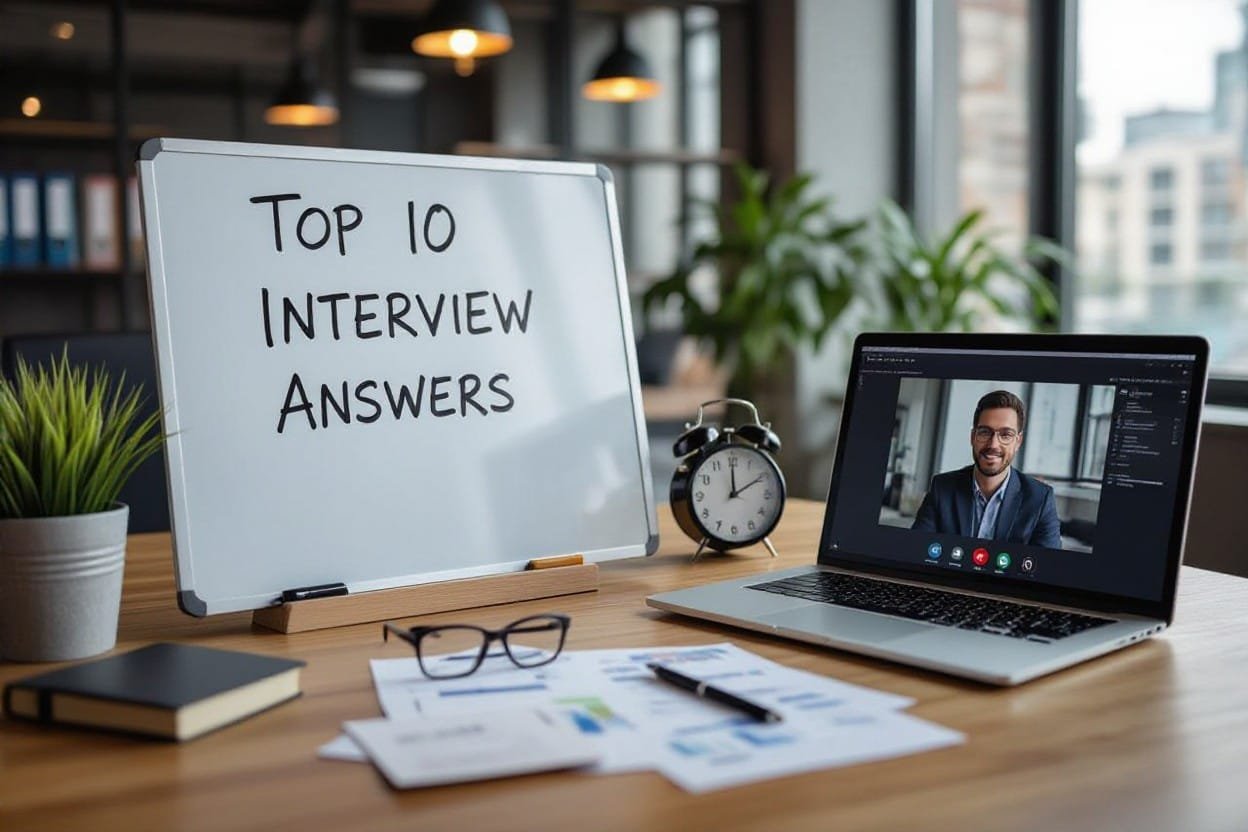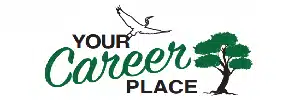Top 10 Answers to Interview Questions
Many job seekers walk into interviews unsure how to answer common questions. I’m with Your Career Place, and in this post I break down the Top 10 Answers to Interview Questions so you can speak with confidence and clarity. I’ll show you concise ways to pitch your experience, explain career goals, handle weakness questions honestly, and frame salary talks with data. Trust me—these tactics come from helping hundreds of candidates at Your Career Place improve results.
Key Takeaways:
- Keep your “Tell me about yourself” short — think of it as a one-minute pitch that connects your background to what the hiring manager needs. At Your Career Place, we coach candidates to lead with impact and end with what they want next.
- When asked to “Walk me through your resume,” skip the full chronology. Highlight 2–3 relevant roles or projects, share measurable outcomes, and tie each piece to how it would help in the job you want.
- Show genuine interest in the company by linking their mission and values to your own motivations — hiring teams want people who’ll fit and contribute. Your Career Place suggests mentioning one specific company goal you’d be excited to work on.
- Handle weaknesses and uniqueness with honesty: name a real area you’re improving, explain the steps you’re taking, and describe a distinctive skill pairing (for example, creative + organized) that makes you stand out.
- Finish strong by asking specific questions about expectations or success metrics, and come prepared for salary talk with a market-based range. Being informed signals you’re thoughtful and serious about the role.
Deciphering Common Questions: What Interviewers Really Want
At Your Career Place I push candidates to treat every common question as a data-driven prompt: give a 60–90 second value pitch for “Tell me about yourself,” highlight 2–3 resume bullets tied to the role for “Walk me through,” and tie salary asks to market ranges. I draw on Leila Hormozi’s framework—concise, specific, outcome-focused answers win—so you can convert interviews into definitive next steps.
The Intent Behind Classic Questions
I teach candidates to decode question intent: “Tell me about yourself” seeks your top 1–2 competencies and impact; “Walk me through your resume” tests relevance—choose three roles that map to the job; “What’s a weakness?” probes self-awareness and learning. At Your Career Place I recommend using measurable outcomes—percentages, timelines, dollar amounts—so you prove claims instead of reciting buzzwords.
Recognizing Hidden Motivations
Interviewers often hide priorities behind standard prompts—culture fit, tenure risk, and problem-solving speed. I’ve seen hiring teams ask about side projects or failed launches to gauge initiative and learning; flag those as proof of curiosity. You should surface one story showing rapid impact (for example, cut onboarding time 30%) and one that shows collaboration across functions.
I coach candidates to listen for trigger words—scale, ownership, pivot, stakeholder—and mirror that language in answers; I’ve observed hiring teams favor candidates who match vocabulary and priorities. Prepare three concise STAR stories: one that improved a metric (reduced costs 12%), one that removed a cross-team blocker, and one that shows rapid learning from failure.
Crafting Your Response: Strategic Answer Techniques
I coach candidates to craft concise, strategic replies that answer hiring managers’ core question: what value will you deliver? Aim for a 60‑second pitch that highlights three accomplishments tied to the role, quantifying impact where possible (e.g., “reduced churn 15%”). Use outcomes and concrete metrics, not life history. At Your Career Place I recommend practicing micro-stories that map directly to job requirements so you can pivot instantly between behavioral, technical, and culture-fit questions.
The STAR Method Explained
I use the STAR framework—Situation, Task, Action, Result—to structure examples so you stay focused. Describe the situation briefly, define your task, spend most words on actions you led, and finish with measurable results. For example, I led a cross-functional team of 5 to revamp onboarding, launched A/B tests that improved activation by 40% and cut time-to-value by 22%; that sequence tells a hiring manager exactly what you did and why it mattered.
Tailoring Responses to Company Culture
I research culture signals across at least three sources: company site (mission, leadership bios), LinkedIn posts (tone and priorities), and two Glassdoor reviews for employee language. Then I mirror that language and priorities in answers—at a seed-stage startup I emphasize speed and multi-hat experience; at a regulated enterprise I stress process, compliance, and stakeholder alignment. This approach shows you fit and increases hireability.
For example, if a company advertises “customer obsession” I cite a project where I reduced support response time 48% and drove a 9‑point NPS lift by instituting SLA tracking and weekly root-cause sprints. For remote-first teams I highlight async systems I set up—Slack channels, weekly written updates, and a 72‑hour feedback loop—that kept a distributed team of 12 aligned. At Your Career Place I walk candidates through crafting 2–3 such tailored anecdotes before interviews.

Building Empathy: Showing Genuine Interest and Fit
I coach candidates at Your Career Place to demonstrate empathy by tying their answers to specific company priorities—mention a recent product update, diversity initiative, or customer metric and explain how your skills would strengthen that work. I recommend researching one annual report or news item and weaving it into your 60–90 second pitch so hiring managers see you understand their context and can picture you contributing on day one.
Questions That Reveal Your Values
Ask focused questions that surface values, for example: “How does the team handle trade-offs between speed and quality?”, “Can you share an example when feedback changed a strategy?”, and “What behaviors get people promoted here?” I advise preparing 3–5 of these—targeted queries show you evaluate fit, not just perks. At Your Career Place I find interviewers respond best to questions that reference a recent company announcement or a specific team metric.
Responding to Behavioral and Situational Challenges
I train candidates to use the STAR framework and to have 4–6 polished stories covering leadership, conflict, failure, and cross-functional work. Quantify outcomes—say “reduced onboarding time by 30%” or “lifted weekly retention from 62% to 78%”—so your examples prove impact. Tailor each story to the role’s core competencies and practice concise openings that highlight the lesson you learned.
Example: when asked about a disagreement with a manager, I outline Situation (misaligned priorities), Task (align roadmap), Action (ran a 2-week pilot and presented A/B results), and Result (adopted hybrid approach, boosting feature adoption 22%). You should emphasize empathy—how you solicited input—and the measurable outcome; hiring teams favor candidates who solve problems and quantify the benefit.
Power Moves: Questions That Showcase Your Skills
I focus your answers on specific wins that prove you can deliver: cite timelines, team size, and percent improvements so hiring managers see outcomes not duties. Lead with the result—“I increased retention 14% in six months”—then explain how. At Your Career Place I coach candidates to have two such stories ready for every role, targeting the metrics that matter to the hiring team.
Translating Experience into Value
I turn resume bullets into impact statements: instead of “managed marketing,” say “I drove a 32% increase in qualified leads over six months by A/B testing landing pages and optimizing ad spend,” naming tools, timelines, and KPIs. You’ll stand out when you map each past responsibility to revenue, cost savings, or efficiency gains the role expects, and I recommend practicing three one-minute value pitches before interviews.
Demonstrating Problem-Solving Abilities
I structure problem stories around diagnosis, action, and measurable outcome: describe the pain (e.g., churn rose 12%), your analysis (cohort review, user interviews), the solution you led, and the result (churn fell to 4% in 90 days). Recruiters at Your Career Place respond best to concise accounts that include tools used, team size, and percent or dollar impact.
For more depth, show trade-offs and learning: explain alternative solutions you considered, why you chose one, and one tweak you’d make next time. Give concrete numbers—baseline, improvement, time frame—and name collaborators (engineers, product, sales). Practicing this layered story lets you demonstrate judgment, scalability, and the ability to repeat the win.

The Art of Closing: Ending on a High Note
I finish interviews by succinctly tying my top qualifications to the role’s priorities and asking about next steps; doing this signals clarity and focus. At Your Career Place I coach candidates to state one concrete result—like “I led a cross-functional project that reduced onboarding time by 30%”—then ask about timeline and confirm contact details. Closing this way leaves interviewers with a clear image of how you add value and saves both sides time.
Engaging with Thoughtful Questions
I prepare 2–3 targeted questions that show I’ve listened: “What would success look like in the first 90 days?” or “Which KPIs will I be measured on?” At Your Career Place I encourage asking one question about team dynamics and one about how to exceed expectations—this separates you from candidates who only ask about perks. You should focus on impact and next-step clarity rather than vague compliments.
Leaving a Lasting Impression
I always end by reiterating my strongest fit and expressing enthusiasm, for example: “Given your emphasis on scaling product adoption, my experience running a 5-person pilot that increased adoption 20% aligns well—I’m excited to bring that to the team.” Then I confirm the timeline and preferred follow-up method so both sides leave with clear expectations.
After the interview I send a concise follow-up within 24 hours: a 3-sentence email that thanks the interviewer, restates one tailored contribution, and asks a single clarifying question or next-step. I include one link—to a portfolio case study or relevant deliverable—and use a simple subject like “Thanks — next steps?” At Your Career Place I find this template presents candidates as organized, engaged, and easy to work with.
Final Words
With these considerations, I’ve distilled the Top 10 Answers to Interview Questions into practical steps so you can present your best self. At Your Career Place, I show you how to make concise, relevant pitches, tie experiences to the role, and ask better questions that signal engagement. I encourage you to practice these frameworks so your answers feel natural and position you as a thoughtful candidate. Your Career Place is here to guide that preparation.
Thank you for visiting Your Career Place. Here are some articles you might like.
https://yourcareerplace.com/top-green-flag-to-watch-for-in-interviews/
https://yourcareerplace.com/10-interview-questions-you-should-be-prepared-to-answer-and-5-to-ask/




